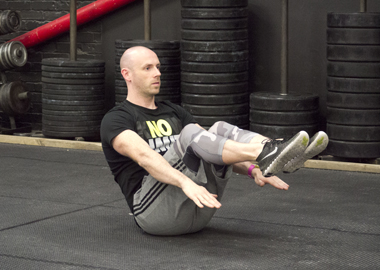Gymnastic 101 Workout
Beginners Level
Gymnastic 101 is a 15 minute AMRAP, meaning you have 15 mins to complete as many rounds/reps as possible. The workout contains four basic bodyweight/gymnastic exercises, with each exercise having an increase in reps. Make sure you warm-up fully before proceeding with this workout.
INstruction
AMRAP 6
Incline Ring Rows x 5 reps
Push-Ups x 10 reps
Air Squats x 15 reps
Tuck-Ups x 20 reps
This workout is against the clock. It is an AMRAP but as always you don’t want to jeopardise technique for speed. Perform each exercise back to back for the designated amount of reps. Once you have completed the Tuck-Ups you move straight back into the Incline Ring Rows. Don’t take too long transitioning from one exercise to the other, move swiftly. Each exercise can be made slightly easier, or more difficult depending on your skill set.













